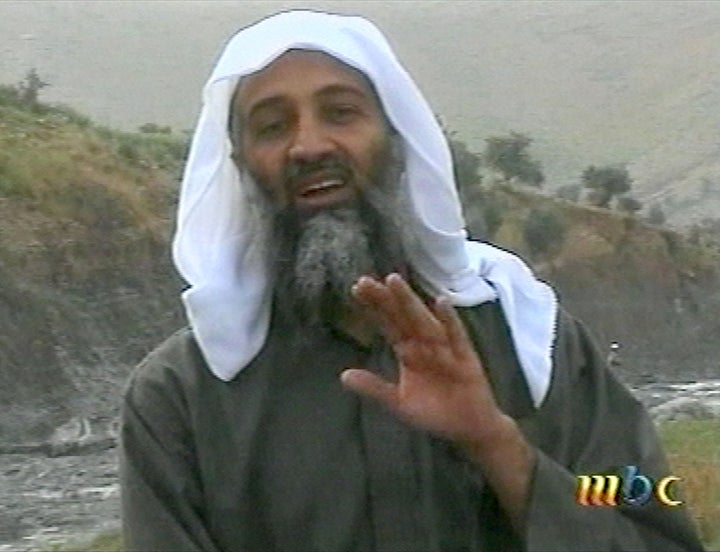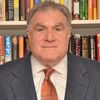
Pearl Harbor was not the deadliest battle in World War II: more than six times as many Americans died over three years later in the Battle of the Bulge. 9/11 was not the deadliest disaster in U.S. history: more of our fellow citizens perished in the Galveston Hurricane of 1900 or the San Francisco Earthquake of 1906. But both attacks marked a change in the psyche of the country, jolting us into a war-time mentality. And both attacks left American leadership committed to killing the mastermind.
Planning and leading the Pearl Harbor attack fell to the commander-in-chief of Japan's Combined Fleet, Admiral Isoroku Yamamoto. He was quite a different kind of leader from Osama bin Laden, but was equally cunning and perhaps more charismatic.
Born into a samurai family and educated at the Imperial Japanese Naval Academy, Yamamoto was a rising star. Mid-career, he was sent for further training at Harvard and the United States Naval War College. The latter stint converted him to an advocate of the new style of naval warfare waged from the air by planes based on carriers and islands. As a flag-officer, Yamamoto led the reformation of the Japanese navy into a modern force, along the way earning immense popularity and respect from officers, sailors and the Imperial family.
His charisma protected him as he opposed the jingoism of the Japanese army, which increasingly dominated Japan's politics and government. During the 1930s, as Japan invaded Manchuria, started a land war in China, and allied with Nazi Germany and Fascist Italy, Yamamoto was in constant danger of assassination by pro-war fanatics.
Yamamoto, like bin Laden, understood how strongly America would react to being attacked. The scriptwriters of Tora! Tora! Tora! probably invented the quote, "I fear that all we have done is to awaken a sleeping giant and fill him with terrible resolve." But the quote does accurately reflect sentiments Yamamoto expressed in private communications.
While bin Laden was the eager leader of attacking America, Yamamoto was reluctant. Only when his army arch-rival General Tojo became Prime Minister in 1941 did Yamamoto accept that war with the United States was inevitable. Knowing that once provoked, the U.S. would be an implacable foe, Yamamoto believed that Japan's only strategy for winning would be to knock out U.S. naval power at the outset. Hence the plan for the sneak attack at Pearl Harbor and the invasion of Midway to finish off the U.S. Navy in the Pacific.
Yamamoto underestimated U.S. intelligence, which had cracked Japan's military and diplomatic codes. Intelligence warnings of the attack on Pearl Harbor did not spur any action -- a circumstance that had an eerie echo 60 years later on 9/11. But intelligence played a major role at the Battle of Midway. Instead of putting the U.S. Navy out of action, the battle became the turning point of the war.
Intelligence was also key to "Operation Vengeance." To boost morale following defeat at Guadalcanal in the spring of 1943, Yamamoto scheduled an inspection tour. On April 14, 1943, American intelligence not only learned the general plan, but the specific itinerary. FDR immediately ordered the Navy to "Get Yamamoto." On April 18, 1943, a squadron of 18 P-38 long-range fighters intercepted Yamamoto's two transports and six Zero fighter escorts. In the ensuing dog fight, only one plane was shot down: the transport carrying the admiral.
Careful intelligence work led us to bin Laden. We have learned some of that story in the last week or so. But during World War II, American leadership felt it imperative to keep Japan and Germany from knowing that we had broken their secret codes. Instead, they told the press that coast watchers in the Solomon Islands spotted Yamamoto boarding the transport plane. The names of the pilots were not released until after the war, as the brother of one of the pilots was in a Japanese POW camp.
History may show that bin Laden had a better read on the American psyche than Yamamoto. Yamamoto wanted to get ahead of what he knew would be America's reaction to being attacked. While it took more than the seven months between Pearl Harbor and Midway for American industrial might to make a difference, it took less than that for the nation to get itself on a war-time footing. Between improved integration of intelligence into decision-making and "do or die" determination, Midway turned from Yamamoto's planned crowning victory into his greatest defeat.
Although bin Laden never lived in America, he understood its politics and institutions better than Yamamoto. He understood that with a provocation as big as Pearl Harbor, America would put itself on a "big war" footing. But instead of a modern state with a large army and navy, America faced a small, stateless, amorphous foe. Bin Laden counted on America over-reacting, over-spending, and blundering. If America could cut taxes during a long Cold War with the superpower Soviet Union, the country would certainly not raise taxes during a new War on Terror. With rising military expenditures and falling tax revenue, the deficit would soar. In his darkest script for us, bin Laden could probably not have imagined that our deficit would reach a percentage of GDP only exceeded by World War II. Bin Laden understood how to turn America against itself as Yamamoto never did.
Yamamoto's death shocked the Japanese people. They had to acknowledge that America's military capability was growing and the Yanks were on the offensive. Still, it took more than two costly, bloody years of fighting and two atomic bombs to compel Japan to surrender.
Our struggle against bin Ladenism enters a new phase with his death. Events throughout the Islamic world, from Tunisia to Egypt to Syria to Iran, show that bin Laden's influence on thought and action already waned. Without such a singular symbol as bin Laden, it may become easier for the American public and our politicians to see the more complex reality that is the Middle East during the Arab Spring.
The old aphorism "the enemy of my enemy is my friend" is not only cynical, it is wrong. Why? Because as soon as the first enemy changes, dies, or is defeated, the "friendships" based only on mutual fears collapse. Often, the old "friend" becomes the next enemy.
True friendships result not from shared fears but from shared interests. That's why they endure.
Sources for this post include:
Edwin P. Hoyt, Yamamoto: The Man who Planned Pearl Harbor, McGraw Hill, 1990
Michael Smith, The Emperor's Codes: The Breaking of Japan's Secret Ciphers, Arcade, 2001
